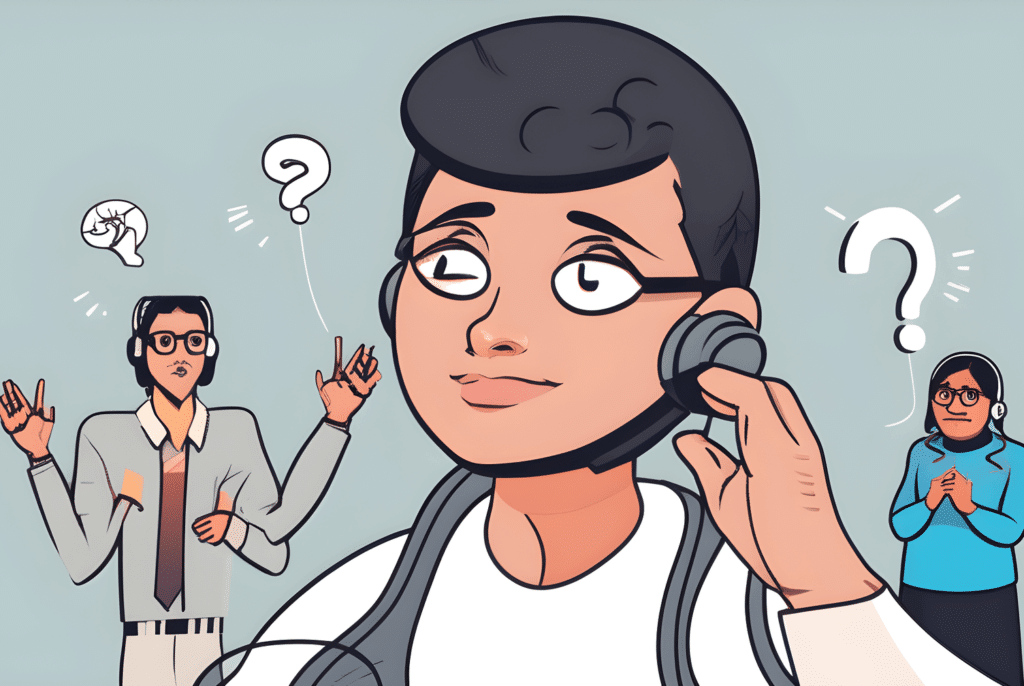When someone says, “I’m worried about you,” it’s a statement that often comes from a place of care, concern, and empathy. It can be difficult to know how to respond, especially if you’re feeling vulnerable or uncertain. Whether you’re going through a tough time or simply don’t want to worry others, it’s important to choose a response that aligns with your feelings and the situation at hand.
In this article, we’ll explore different ways to respond to someone who expresses concern for you. We’ll discuss how to acknowledge their worry, offer reassurance, or even ask for help if needed. Our goal is to provide you with thoughtful and easy-to-understand responses for various scenarios so you can navigate these conversations more smoothly. We’ll also delve into why people say “I’m worried about you” and how this can reflect different types of relationships and emotions.
Why Do People Say “I’m Worried About You”?
Before diving into the different responses, let’s first understand why someone might say, “I’m worried about you.”
- Signs of Concern: They may have noticed something that doesn’t seem quite right. Whether it’s a change in behavior, mood, or health, their worry is coming from a place of caring.
- Emotional Support: People who care about you might use this phrase as a way to express their emotional investment in your well-being. It can be their way of letting you know they’re there for you.
- Relationship Dynamics: The person might be a friend, family member, or partner who is invested in your happiness and safety. Their concern reflects the closeness of your relationship.
- Prevention: Sometimes, someone might say this because they want to prevent you from heading down a potentially dangerous or harmful path. It’s a way of trying to protect you.
Now, let’s explore the different responses you can use when someone says, “I’m worried about you.”
1. Reassuring Responses
If you’re not in a crisis or don’t want to worry the person further, you can reassure them that you’re okay or that you’re taking care of things.
1.1 “Thank you for caring. I’m doing okay.”
This is a simple and honest response. It acknowledges their concern and reassures them that you’re managing well.
1.2 “I appreciate your worry. I’m just going through a lot right now, but I’m handling it.”
This response provides more context without going into too much detail. It shows that you are aware of their concern but are handling your situation.
1.3 “I know it looks like I’m struggling, but I promise I’m alright.”
Sometimes, people may perceive you as being in trouble even when you’re just going through a rough patch. This response gently clears up any misunderstandings while thanking them for their concern.
1.4 “It means a lot that you’re worried. I’ve got things under control, though.”
This is a balanced answer that reassures the person while still expressing gratitude for their care.
1.5 “I’m glad you care, but I’ve got this. I’m not in any real danger.”
This response helps ease their worry and assures them you’re capable of managing whatever you’re going through.
Example Usage:
Person A: “I’m worried about you.”
Person B: “Thank you for caring. I’m doing okay.”
2. Acknowledging Their Concern
Sometimes, you might not feel ready to explain yourself or go into detail about your feelings. In these cases, acknowledging their concern can still validate their feelings without necessarily opening up too much.
2.1 “I understand why you’re worried. It’s been a tough time.”
This response acknowledges their worry while subtly giving a reason for your behavior or mood. It shows that you recognize their concern without necessarily offering a solution.
2.2 “I can see why you’d feel that way. I’m working on it.”
Here, you’re validating the person’s feelings, suggesting that you know why they’re concerned, and reassuring them that you’re addressing the situation.
2.3 “I know you’re worried, and I appreciate that. I’m taking steps to improve things.”
This shows that you’re aware of their feelings and that you’re actively working on whatever issue they might be worried about.
2.4 “I understand your concern, and I promise I’ll keep you updated.”
This response acknowledges their worry and reassures them that you’re keeping them in the loop about your situation, making them feel included and less anxious.
Example Usage:
Person A: “I’m worried about you.”
Person B: “I can see why you’d feel that way. I’m working on it.”
3. Honest or Vulnerable Responses
Sometimes, when someone expresses concern, it can open the door for you to be more honest or vulnerable. If you’re comfortable, you can share more about what’s going on and why you’re feeling the way you are.
3.1 “I’ve been struggling a bit lately. I’m glad you noticed.”
This response lets the person know that you are going through a difficult time and are open to talking about it.
3.2 “It’s been hard, but I’m trying to get through it. Thanks for noticing.”
This answer expresses gratitude while admitting that things are tough but manageable.
3.3 “I’ve been feeling off recently, and it’s been weighing on me.”
This response opens the door for further conversation, allowing the person to offer more support or help if you want it.
3.4 “Honestly, I’ve been overwhelmed, and it’s hard to keep up. But I’m not giving up.”
Being vulnerable in this way may encourage the person to offer assistance, whether it’s emotional or practical.
3.5 “I’m dealing with a lot right now, and it’s been hard to manage on my own.”
If you’re struggling but don’t want to go into too much detail, this response allows you to share your emotions without oversharing.
Example Usage:
Person A: “I’m worried about you.”
Person B: “Honestly, I’ve been overwhelmed, and it’s hard to keep up. But I’m not giving up.”
4. Asking for Help or Support
If you feel comfortable and think you need assistance, it might be helpful to express that to the person. Asking for help can sometimes be a sign of strength, not weakness.
4.1 “I really appreciate your concern. I could use someone to talk to.”
This response opens the door for emotional support, signaling that you’d like to talk about what’s going on but don’t want to go into details immediately.
4.2 “I’ve been feeling pretty down lately. Can we talk more about this?”
Here, you’re asking for more space to talk about your feelings. It’s a gentle way of letting the person know that you need their emotional support.
4.3 “I’m not doing too well at the moment. Could we maybe spend some time together?”
If you’re feeling lonely or isolated, this response invites the person to provide comfort or support by being with you.
4.4 “I’m struggling more than I’ve let on. Can I lean on you a little bit?”
This is a more direct way of asking for help while acknowledging that you’re finding things hard.
4.5 “It would really help if I had some advice or guidance right now. Do you have a minute?”
This response asks for practical advice or assistance, showing that you trust the person and value their perspective.
Example Usage:
Person A: “I’m worried about you.”
Person B: “I really appreciate your concern. I could use someone to talk to.”
5. Lighthearted or Humor-Based Responses
In some cases, especially if you have a close or relaxed relationship with the person, you may use humor to diffuse the situation. While humor can be a good coping mechanism, it’s important to gauge the seriousness of the situation before using it.
5.1 “You don’t need to worry! I’m just trying to figure out life one step at a time.”
This response adds a light tone to the situation, signaling that you’re working through things but in a more laid-back manner.
5.2 “I’m not a superhero, but I’m doing my best!”
This can bring some levity to the conversation, letting the person know you’re managing but not without challenges.
5.3 “I think I’m okay, but thanks for worrying! You’re the best.”
A lighthearted response that acknowledges the concern while keeping things light.
5.4 “Well, life’s a rollercoaster, and right now, I’m just holding on tight!”
This humorous response can ease some of the tension, suggesting that you’re handling things even if they’re not perfect.
5.5 “You know me, always keeping things interesting!”
This response brings a humorous tone, suggesting that while things may not be ideal, you’re doing your best.
Example Usage:
Person A: “I’m worried about you.”
Person B: “You know me, always keeping things interesting!”
6. When You’re Not Ready to Talk
If you’re not ready to discuss your feelings or situation, it’s okay to politely let the person know that you need some time. These responses let you set boundaries while still acknowledging their concern.
6.1 “I’m not ready to talk about it right now, but I really appreciate your concern.”
This response sets a boundary without shutting the person down. It lets them know you’re not ready to open up but still value their care.
6.2 “I need a bit of time to process things, but thanks for reaching out.”
This answer shows that you’re taking time to figure things out, but it reassures the person that you recognize their worry.
6.3 “I don’t have all the answers yet, but I’ll let you know when I’m ready.”
This is another way of setting boundaries while indicating that you’ll talk when you’re more prepared.
Example Usage:
Person A: “I’m worried about you.”
Person B: “I’m not ready to talk about it right now, but I really appreciate your concern.”
Conclusion
When someone says, “I’m worried about you,” it can be a tough moment to navigate, especially if you’re unsure of how to respond. However, your response can range from reassuring and grateful to open and vulnerable, depending on how much you’re willing to share and the nature of your relationship with the person.
It’s important to acknowledge their care and concern, whether you’re offering reassurance, asking for support, or choosing to lighten the mood. Ultimately, your response can foster deeper connections and let the person know how you’re feeling—without necessarily overloading them with too much information.
Remember, there’s no single right way to respond. The best answer depends on your situation, your feelings, and the relationship you share with the person expressing their worry.



